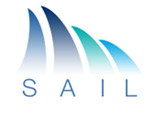By Ramón Agüero and Marta García-Arranz
With some delay after the meeting, we wanted to share our view (better say our feelings) about its organizational aspects. It was quite a heavy couple of weeks, but everything worked out well at the end and we were really satisfied about the outcome. That was also what we obtained with the attendees’ feedback. Santander will always welcome SAIL and it will maybe see most of the SAILors in 2012, during the Summer School.
It’s been around one month since we finished with the 2nd SAIL General Meeting, and still we haven’t had the time to sync again. First of all, we must say that, despite the hard times before and during the meeting, all the people who shared the organization burden were really happy about the outcome.
The beginning was not that good, though…
We were probably too optimistic, but we only visited the Palace on the Thursday before the week of the meeting. Everything seemed to be fine in the beginning: the catering, we had enough beamers, we had also gathered some whiteboards.
But, there were no tables in any of the rooms! To be honest we were rather concerned about this, but we thought there was little to do about it. Luckily, with the help of Lola and Fátima (who we would really to thank for their support) and a last-minute-call to a local contact sorted out the issue.
Then the meeting started, and although the weather forecast said that we should not have had much showers, it rained cats and dogs for almost 24 hours during Monday and Tuesday. The participants from work package C and D had to suffer this while walking from the university and the restaurant. I know that some guys were really soaking when the arrived at the hotel that night… First day was over.
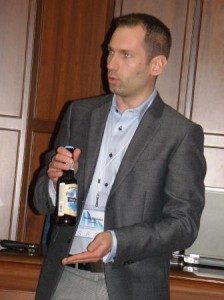
Thomas giving the SAIL ale to the host...
Tuesday came again with gray sky. Everybody went up to the Palacio and the main meeting started. We got interesting project-wide presentations and the session of the host, which was (despite its academic background) well received. At least we had the SAIL ale.
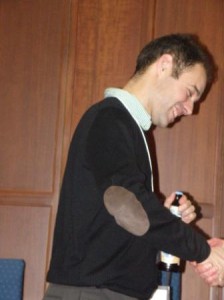
...and the host receiving it.
After a not-so-well-understood finger-type buffet (the catering people believed that we were going to stand up during lunch) we broke in workpackage sessions. On Tuesday work package C organized a dinner, and the Yammer tool opened it to other people. It was a nice night at “El Riojano”. Second day was over.
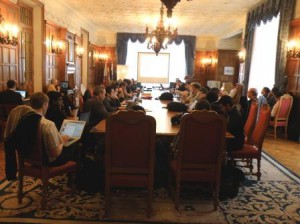
Crowded table during the prototyping theme meeting
Sun was not arriving (even on Wednesday) and we were starting to loose our optimism about this point. The day started with theme and cross work package meetings, and the most crowded one (prototyping) completed the table where top guys have been discussing relevant issues in the past.
We benefitted from the first sun lights of the whole week and we took some nice group pictures (SAIL appeared in the local press). That night we had the social event, enjoying a nice dinner at Deluz. Third day was over.
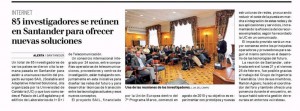
Press Release in Alerta, March, 1st 2011
Thursday was the last day for most of the people, and guess what – the sun arrived! The shuttle service had a problem with the first passengers (due to an accident), but everything worked out fine at the end… It was funny to see all the people taking photographs. We could feel that this was coming to an end, since the activity was somehow reducing smoothly. At 18:00, the last guys left. Fourth day was over, and we were almost there. Afterwards we needed to collect all the material from the Palace. WPB had a dinner and some rumors were heard about having a good time…
On Friday, with really nice weather, WPB met at the University; we had a not-so-nice coffee break and we enjoyed (with the late birds) a nice lunch in a restaurant nearby. The last shuttle left at 15:00. Fifth day was over and we could not even believe it.
We only hope that the stay of the +80 people in Santander was nice; it was really a pleasure having all of them here. At the end the whole thing worked out quite nicely and we will also organize the 2012 SAIL Summer School… We hope to welcome some of you again (this time with some more sun).
Disclosure and disclaimer: we are engaged in SAIL, an ICT project about the Future Internet, on behalf of University of Cantabria. However the opinions expressed in this post are our personal ones, and not those of the SAIL project or our employer.

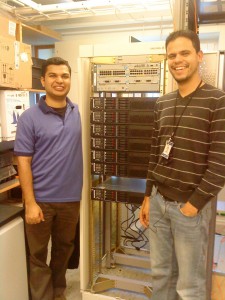




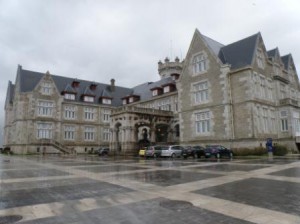
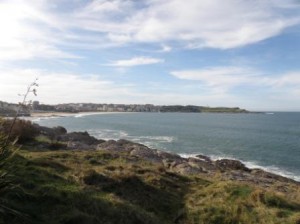
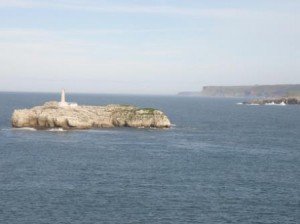 Much had happened, and a lot of impressions had filled my mind, when it was time to leave Santander. The meeting had exceeded my expectations, with the beauty of Santander, the generosity of the hosts and all these genial people engaged in SAIL! In contrast to the harsh cross-winds, that made my flight land heavy first on the second (!) attempt upon arrival in Bilbao, I now had a feeling that these Cantabrian winds had turned to our favor making us sail into the next project phase as an even stronger and more vivid team. A team of which I am very proud and happy to be a part of!
Much had happened, and a lot of impressions had filled my mind, when it was time to leave Santander. The meeting had exceeded my expectations, with the beauty of Santander, the generosity of the hosts and all these genial people engaged in SAIL! In contrast to the harsh cross-winds, that made my flight land heavy first on the second (!) attempt upon arrival in Bilbao, I now had a feeling that these Cantabrian winds had turned to our favor making us sail into the next project phase as an even stronger and more vivid team. A team of which I am very proud and happy to be a part of!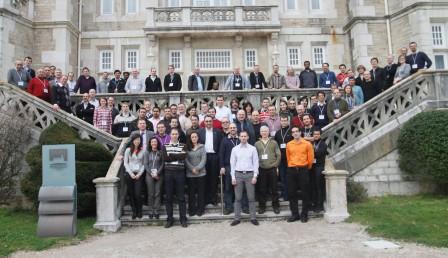

 From December 5th to 8th 2010, the
From December 5th to 8th 2010, the 





